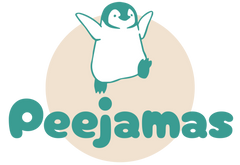You may know someone with kids right around your kids’ same age, and have watched as their child and your child hit all the important milestones within a few days or weeks of each other. Now, you know that you’re not supposed to compare children because all kids develop at different rates, but it can be challenging not to feel a twinge of competition when their son starts potty training just shy of his second birthday and your son still can’t identify a potty, much less ask to use it. You might be left wondering: is my child just way behind?

(Pixabay / ddimitrova)
As you embark on the journey that is potty training, know that no child is the same, but there are certain things that you can look for that indicate potty readiness. Believe it or not, most kids have some degree of potty training and bowel awareness as early as 12 months old when they stop pooping in their diapers while they sleep. Next usually comes daytime bowel awareness around 12-18 months when they poop at certain times of the day. Daytime urinary awareness typically comes somewhere between 18 months and three years, and nighttime urinary awareness may not consistently happen until after six years old. While you should expect accidents every once in a while, if your child is over six years old and has nighttime accidents frequently, you should seek out a pediatrician’s advice.
Getting back to the signs of potty readiness, you can break things down into three areas: physical, emotional, and cognitive readiness.
Physical
Physical readiness means that your child’s body can do the things it needs to do to have a successful potty experience. Things to look for are if your child can dress and undress himself quickly (curse you, buttons!), can sit still (can’t have him wiggling all over the potty, can we?), and has fairly regular and predictable bowel movements. He should also be able to walk or run well enough to get to the potty in time and be physically able to get on and stay on the potty by himself. You’ll most likely use a potty training chair at first because, let’s face it, toddler bums are tiny, and grown-up toilet seats are massive! If you choose not to use a training seat, however, you may need a step stool to help your child get up and down from the toilet.
Emotional
Emotional readiness means that your child is open to the idea of using the potty. He’s interested and asking questions whenever he sees you, a family member, or pet go pee or poop. He may even talk about (or sing about, in Daniel Tiger’s case) the potty when he’s not around it. Mostly, he shouldn’t be scared when he sees the toilet or hears it flush. If your child runs panicked at the mere thought of the loo, he’s probably not ready for it. That said, if you find that your child remains terrified of the toilet, there are some things you can do to help him along. Start by talking about the potty using positive language and explain what you’re doing. Read children’s books and watch programs that talk about using the potty. The less mysterious the toilet and potty process is, the more open your child will be to trying it.
Cognitive
Lastly, your child may be cognitively ready if he can follow directions (pull your pants down, get on the potty, go potty, wipe, flush, wash your hands, etc.) and can tell you when he needs to use it. In the beginning, your child may tell you after he’s already gone in his diaper, but that’s just the first step in recognizing when he needs to go, and you should celebrate his self-awareness.
Ways to Stay Positive
It’s a pretty safe bet to say that you’ve either experienced the frustration that can come with potty training or you’ve heard about it from a friend, but when accidents happen, you’ve got to make a concerted effort to steer clear of showing your annoyance. Children are a lot more perceptive than we give them credit for, and even if you’re not explicitly getting after your child post-accident, they can pick up on anger and irritation from your body language. If your child fears a negative reaction from you when they have an accident (because let’s face it: they will happen), it might lead to constipation, reluctance to keep trying to use the potty, outbursts, stubbornness, and other delays.
When you’re feeling the flush start to creep in your cheeks as you spot yet another puddle, here are some things you can do:
- Close your eyes, take a deep breath, and count to 10 before you say or do anything
- Quickly stretch your arms, legs, neck, and back before tackling the clean up
- Get a drink of water
- Reassure your child that accidents happen
- Give your child a hug
- Praise your child for the things they did right (he told you about the accident, he almost made it to the potty on time, he got undressed quickly, etc.)
As you’re cleaning up, you can have your child help you or sit nearby as you debrief what went wrong and what they can do differently next time. Children struggle to use the potty for a lot of reasons including (but not limited to) being absorbed in an activity, not being able to get clothes off quickly enough, not wanting to pause a fun activity, being afraid of failure, and a desire for attention. Encourage your child to use the potty regularly, don’t get overly stressed if they don’t succeed, and praise every positive step your child makes in the right direction.


